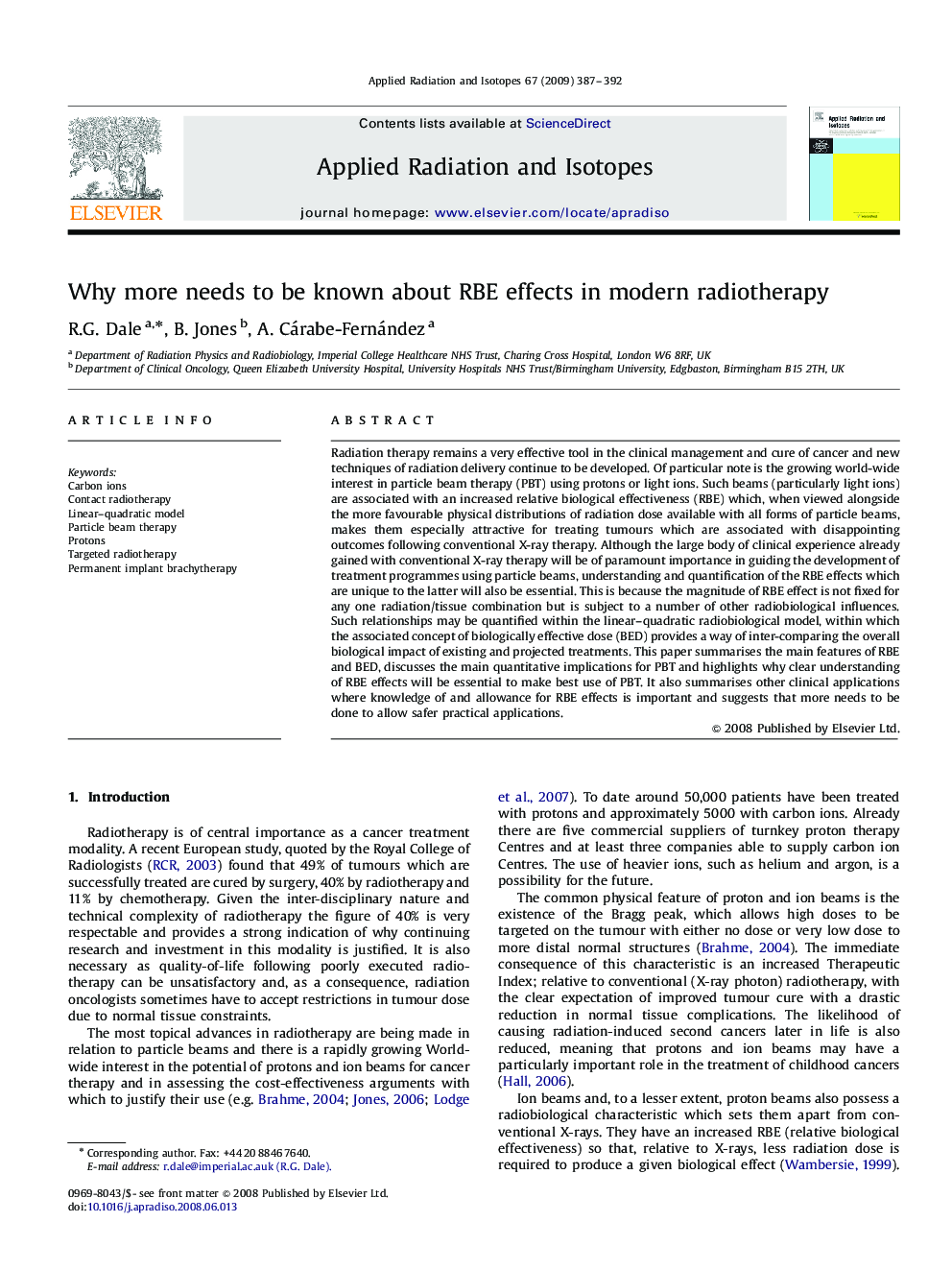| Article ID | Journal | Published Year | Pages | File Type |
|---|---|---|---|---|
| 1876636 | Applied Radiation and Isotopes | 2009 | 6 Pages |
Radiation therapy remains a very effective tool in the clinical management and cure of cancer and new techniques of radiation delivery continue to be developed. Of particular note is the growing world-wide interest in particle beam therapy (PBT) using protons or light ions. Such beams (particularly light ions) are associated with an increased relative biological effectiveness (RBE) which, when viewed alongside the more favourable physical distributions of radiation dose available with all forms of particle beams, makes them especially attractive for treating tumours which are associated with disappointing outcomes following conventional X-ray therapy. Although the large body of clinical experience already gained with conventional X-ray therapy will be of paramount importance in guiding the development of treatment programmes using particle beams, understanding and quantification of the RBE effects which are unique to the latter will also be essential. This is because the magnitude of RBE effect is not fixed for any one radiation/tissue combination but is subject to a number of other radiobiological influences. Such relationships may be quantified within the linear–quadratic radiobiological model, within which the associated concept of biologically effective dose (BED) provides a way of inter-comparing the overall biological impact of existing and projected treatments. This paper summarises the main features of RBE and BED, discusses the main quantitative implications for PBT and highlights why clear understanding of RBE effects will be essential to make best use of PBT. It also summarises other clinical applications where knowledge of and allowance for RBE effects is important and suggests that more needs to be done to allow safer practical applications.
